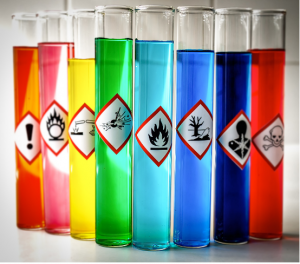
Finally—EPA takes steps to unify its approach to the evaluation of chemicals for cancer and non-cancer endpoints
Jennifer McPartland, Ph.D., is a Senior Scientist, and Lariah Edwards, Ph.D., is an EDF-George Washington University Postdoctoral Fellow
A recent article in Inside EPA ($) indicated that the US EPA’s Integrated Risk Information System (IRIS) will begin piloting a “unified approach” to the evaluation of chemicals for cancer and non-cancer endpoints. Specifically, it appears that the program intends to develop analyses demonstrating how a unified approach could work as supplements to some of its chemical assessments. This represents a major step forward in advancing the science of chemical assessment at EPA and is responsive to recommendations the scientific community and stakeholders have been making for years.
By way of background, chemical regulatory assessments generally assume that if a chemical is a genotoxic carcinogen, there is no exposure threshold for the effect. This means that across a diverse population, some level of risk for developing cancer exists at any level of exposure. Traditionally for all other toxicity endpoints, EPA and other regulatory agencies typically have assumed that there is a bright-line exposure threshold below which no adverse health effect will be seen.
This bifurcated approach to characterizing chemical hazards and risks is not scientifically supported. The assumption that there are “safe” exposure thresholds for all non-cancer endpoints ignores real-world variability in exposure and susceptibility across the human population. This variability influences whether any particular person or group will experience an adverse effect, and includes such factors as: co-exposures to other chemical and non-chemical stressors and differences in susceptibility that may arise from things like genetic differences or underlying health conditions.
Indeed, the authors of the National Academies’ seminal Science and Decisions report noted (p. 9): “Scientific and risk-management considerations both support unification of cancer and noncancer dose-response assessment approaches. The committee therefore recommends a consistent, unified approach for dose-response modeling that includes formal, systematic assessment of background disease processes and exposures, possible vulnerable populations, and modes of action that may affect a chemical’s dose-response relationship in humans.”
To move toward a unified approach to chemical assessment, it appears the IRIS program will be piloting what’s called probabilistic risk-specific dose distribution analyses—methods historically used exclusively for cancer endpoints—for application to noncancer health endpoints. Sparing our readers the gory scientific details, the most important thing to know is that this type of method provides estimates of health risk to the population resulting from any level of exposure to a toxic chemical. It does so by incorporating specific adjustments for uncertainties and variabilities that reflect real-world phenomena that influence a person’s risk of experiencing adverse health outcomes from such exposure.
From a public health perspective, the current approach for assessing risks for non-cancer endpoints stymies effective chemical policy and regulatory decision-making. For example, the current bright-line approach severely hampers EPA’s ability to perform robust benefit-cost analyses of different chemical risk management options: If one cannot quantify non-cancer health risks at levels of exposure below the assumed threshold, any benefits that accrue from reductions in exposure below the threshold are ignored or understated. In contrast, the probabilistic analysis IRIS will be piloting for non-cancer endpoints will allow for more appropriate and meaningful risk characterization and risk management.
More broadly, we are excited to see EPA back at the helm of advancing critical and long-needed improvements in risk assessment science.











